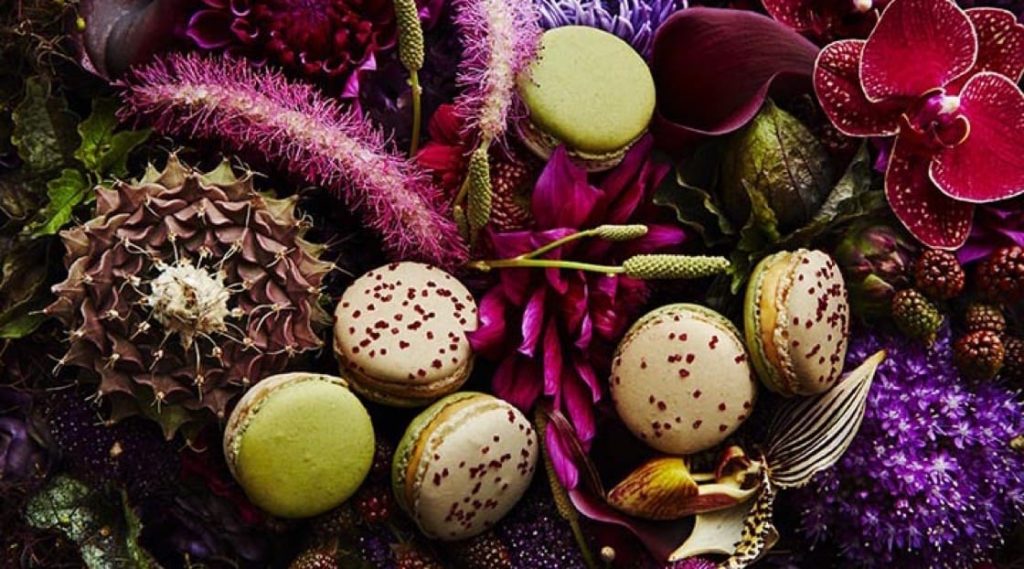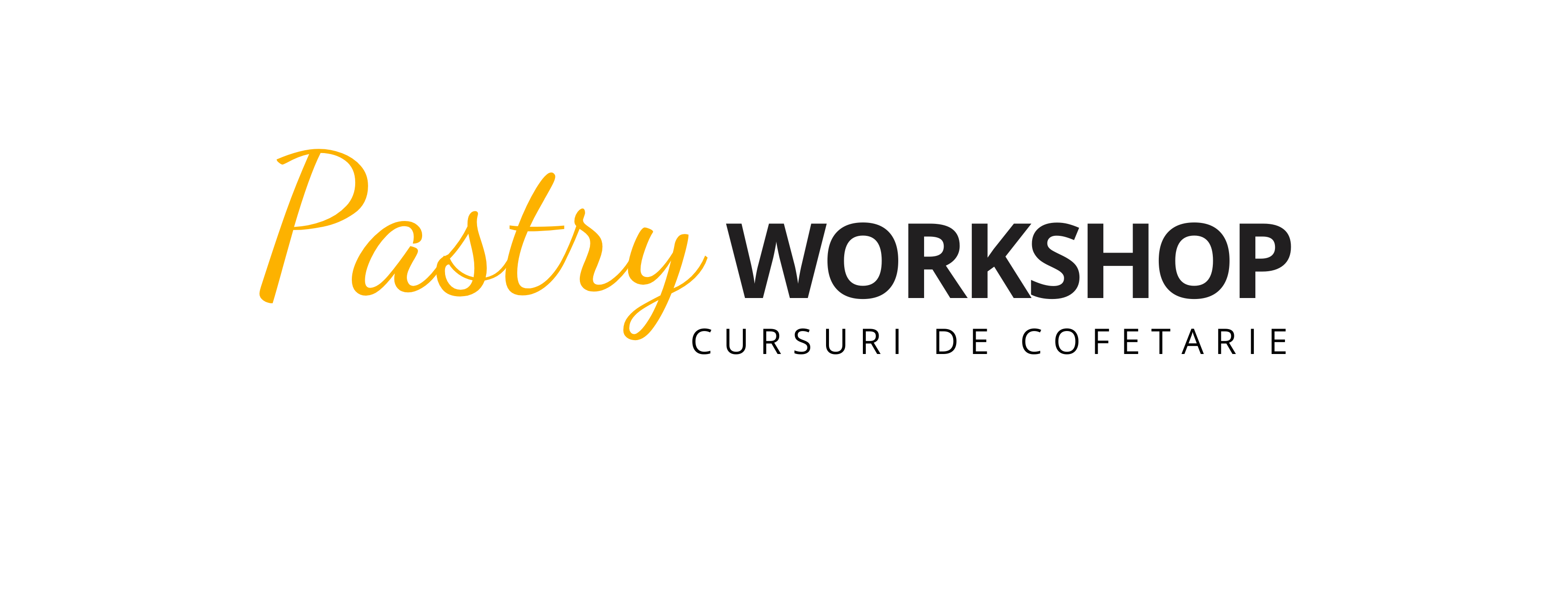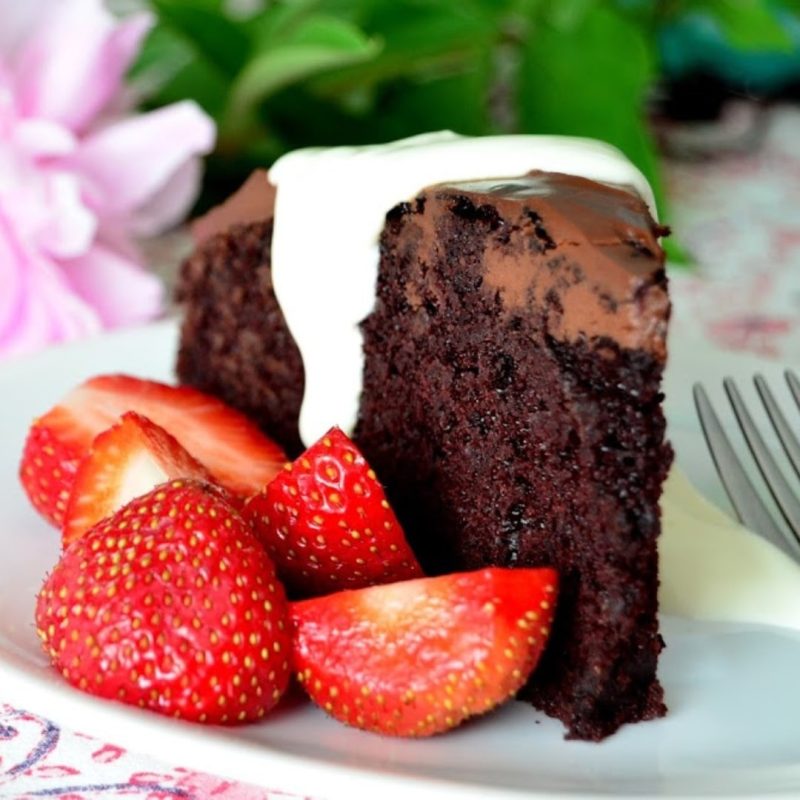Pierre Herme – The Picasso of Pastry
Pierre Herme Biography – The Picasso of Pastry
Pierre Herme was born on November 20, 1961 in France. He just had to be French to be able to bring the art into his pastries. He is most known for his macarons, especially for the unusual flavors or combinations he creates, but also for his well written books, such as Le Larousse des Desserts, Pastries or Macarons. One of the things that stands out about him is his cooking philosophy. He prefers delicate, subtle decorations and uses sugar in the same way salt is being used in savory cooking, just to enhance the other flavors without ever overwhelming them. His desserts are never overly sweet, but always full of flavors that just work together and flood your senses with aroma. To be fully honest with you, I love this way of seeing desserts. I’ve never been a huge fan of sugar and I remember eating once a cake so sweet that it made me cringe. The other flavors in the cake, chocolate and coffee, were simply overwhelmed by the amount of sugar. That sweetness just left your taste buds numb for a while. So I understand his philosophy and I couldn’t agree more.
Pierre Herme began his career at the age of 14 as an apprentice in Paris with the renowned patissier Gaston Lenôtre. In an interview he was asked what he dreamt about when he was little and he said: „Architecture. I like building things and, actually, pastry is not far from architecture. It’s about the architecture of flavors. When we make a cake, it’s often through creating layers of the flavors. We make it so that it corresponds to the flavors we imagine”. In fact, many people call Pierre Herme the Picasso of pastry or the architecture of taste in pastry.
He wasn’t exactly a novice in the pastry kitchen since his family had an Alsatian bakery for four generations already. So he was born with it, he grew up with pastries and loved every aspect of making desserts. Herme became pastry chef at the age of 24 and he aimed for haute pattisserie rather than settle for the common desserts and flavors at that time. He worked at Fauchon for 11 years and he left it to start working with the famous Laduree in Paris. He said in an interview about his start in the pastry kitchen: „At Lenotre I learnt my trade, what quality is, organizational skills, discipline and exactitude, so really the things that are the bottom line in my trade. At Fauchon, I was able to create and express my style, both very important stages. Laduree was where I was able to put it all in place and move above pastry to ensure the transition and evolution of that enterprise. In one year Laduree went from a little bakery in paris to a big brand name. When I arrived, there was not a lot of organization, they didn’t have a logo”.

But despite of the fame Laduree brought him, he wanted to start on his own so in 1996 he started Pierre Herme Paris with an associate, but since he was still under contract with Laduree, he couldn’t open a store in Paris. The first store was open in Tokyo in 1998, followed by Salon De The in 2000. Four years later he opened another store in Paris, followed by another one in Tokyo which he says it displays his evolution as patissier. There are over seven stores in Tokyo at the moment, many stores and boutiques in Paris, two in Lodon, some in Hong Kong and some Arab countries, as well as one online store.
His most famous and appreciated desserts are certainly his macarons. He is the champion of making macarons, bringing decadence into these little desserts. He proved to the world that art comes in simple things and bold flavors. He is definitely not afraid of flavors, spices, colors and textures and uses them all to make his desserts perfect. The journey to macarons perfection started in 1976 when he began combining new ingredients with original recipes to create brand new flavor profiles. Vanilla and green olives, violets and liquorice and white miso were definitely not something you would expect in desserts. But it’s this new approach that brough life into a classic dessert and made him famous.
“I didn’t like macaróns, they lacked any sort of creativity,” Hermé says. “Back then, macaróns were either chocolate or raspberry-flavored. At best, you might get a new flavor such as coffee, but they were always too sweet. I didn’t like them at all.” But he managed to take something he didn’t like and transform it into something he loved and all of that through taste.

His most famous macaron is the Ispahan – an amazing combination of rose, raspberry and lychee which he calls his „Chanel suit”. “I came across a rose flavor when having a Bulgarian meal, which led to the creation of my Paradis rose cake in 1987,” he says. Later, he wanted to concentrate this flavor into his macarons, thus creating the Ispahan, a mix of rose and lychee with the subtle addition of raspberry.
What I particularly love about Pierre Herme is the simplicity and yet the complexity of his desserts. At a first glance at his desserts, you would think they look simple and so elegant, but only a pastry chef could know how much work it is behind it, how much work it takes to obtain such a clean and elegant look, but at the same time modern and unique. Not to mention the interior which has to be innovative and delicious. Pierre Herme shows so much passion for his creations, so much love for pastries and that is why he is currently the man who changed the face of modern pastry. There is no final outcome in the world of desserts, he says. „The only limits are yourself and your imagination”!
The secret of succeeding as a pastry chef, says Pierre Herme, is knowledge. You start learning like a student, but you need to go beyond that, learning about the history of pastry and studying the people who have done it before you. But „history of the ingredients is crucial” he says. „It gives you power and the base to be creative”, he states. And how true is that?!

Since he opened his own stores, he makes bi-annual collections of pastries which are inspired by haute couture or other popular designs, sometimes with surprising themes such as Fetish, White or Desire. About his desserts, he says: ” We are not Protect&Gamble. We don’t make products that the customer wants – we make an offer to the customer”. Surprisingly, he then adds: „the wishes of the customer don’t matter to me at all”. I love how he expresses this thought because he sees himself as an artist, his work is not commercial, but a piece of edible art. His customers are those who love and appreciate dessert at its true value, people who would pay for quality over quantity. Would you prefer a painting that has been made in a factory in dozens of pieces or an original Picasso?! You’d definitely choose the latter because it’s a guarantee of quality. And it’s the same with Pierre Herme’s desserts. He’s an artist just like any other artist, but he makes edible art, to the delight of our taste buds. Pierre Herme is the definition of sweet perfection, bold flavors and perfectly constructed desserts.
Picture source: Google









One Comment